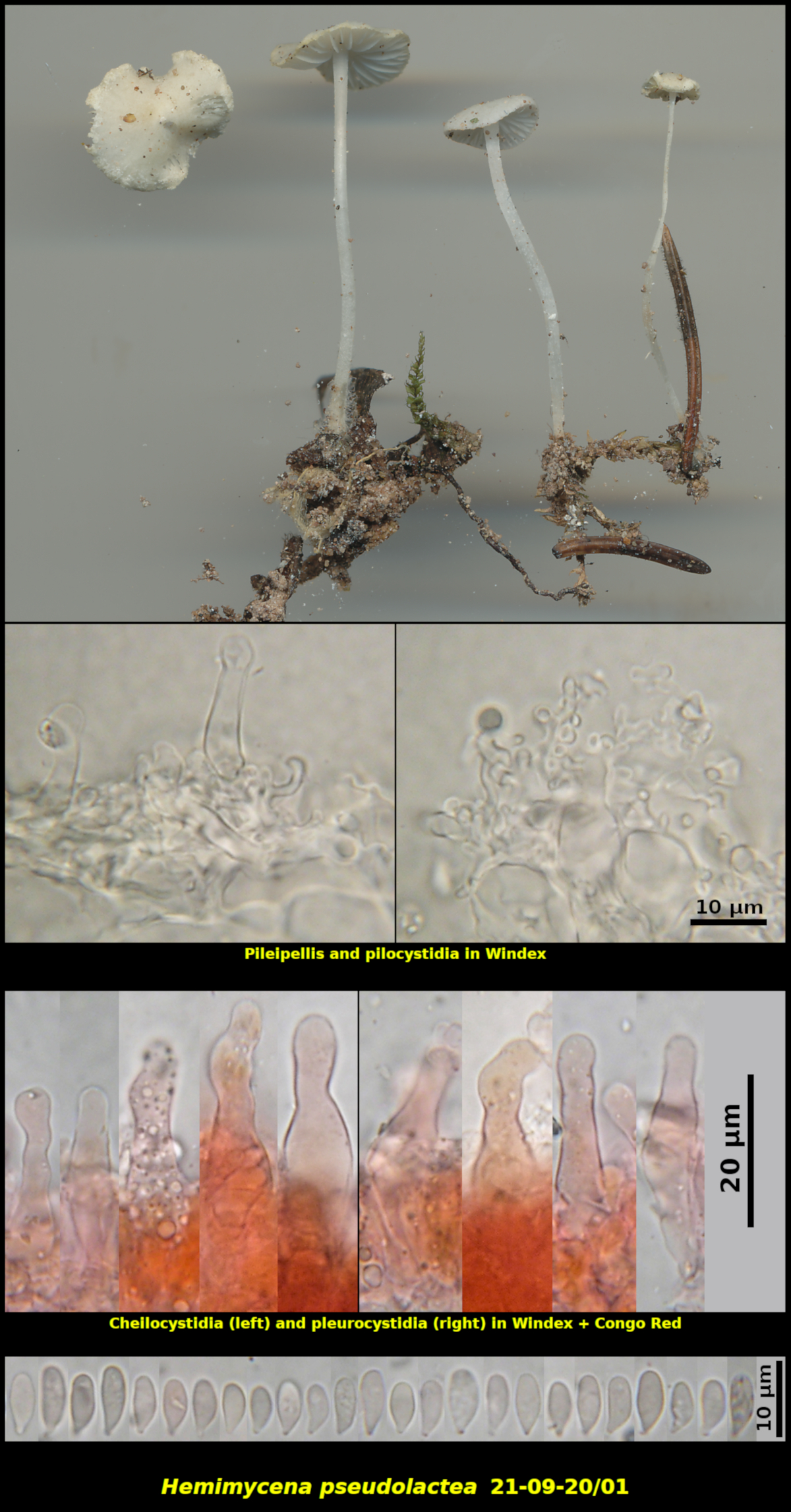Fleshy Fungi of New Brunswick >>
Hemimycena pseudolactea
Hemimycena_pseudolactea (Kühner) Singer

Gregarious (4) among mosses in small moist embankment with gypsum soil, associated with Betula alleghaniensis and Acer spicatum, Wilson Brook Protected Natural Area, Albert Mines, New Brunswick (21-09-20/01).
Pileus broadly convex, without an umbo, only very obscurely striate near the margin, dry, glabrous, white, 5-9 mm in diameter. Stipe equal, not swollen at the base, minutely pruinose down to the coarsely strigose base, dry white, 23-25 x 0.3-0.9 mm. Lamellae white, subclose, adnexed, not marginate. Flesh white.
Basidiospores not forming a spore print and only measured from lamellae, hyaline, narrow, dacryoid, smooth, inamyloid, 5.6-8.5 x 2.5-3.8 μm, Q = 1.78-2.78 (average[35]: 7.1 x 3.1 μm, Q = 2.26. Cheilocystidia scattered along the edges of the lamellae, not forming a continuous sterile margin, irregularly lageniform to sublecythiform, often with a wavy neck, 27-40 x 7.1-10.8 μm. Pleurocystidia scattered but abundant throughout the entire lamella, similar to the cheilocystidia, 24-41 x 5.8-10.2 μm. Pileipellis a thin cutis of branched coralloid hyphae. Pilocystidia abundant, similar to the cheilocystidia or much smaller and produced by proliferations of the coralloid hyphae, often capitate. Basidia 4-spored. Clamp connections present but minute and difficult to observe.
Hemimycena is a genus of very small and mostly white mushroom resembling species of Mycena but differing in having inamyloid basidiospores. The species are distinguished using microscopic details. Hemimycena pseudolactea is characterized by abundant and often capitate hymenial cystidia and by its very narrowly dacryoid basidiospores.
Photograph: D. Malloch (21-09-20/01).